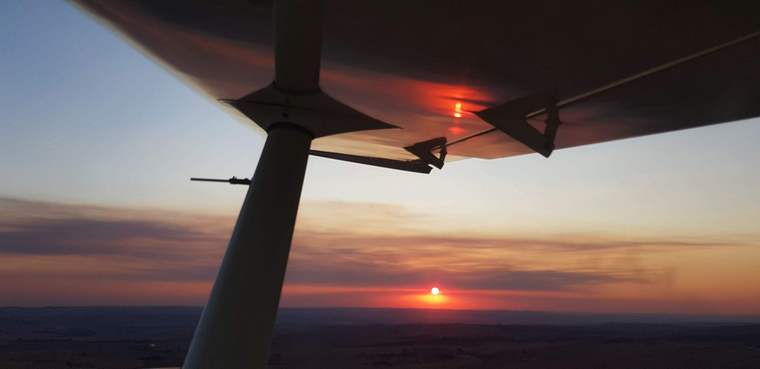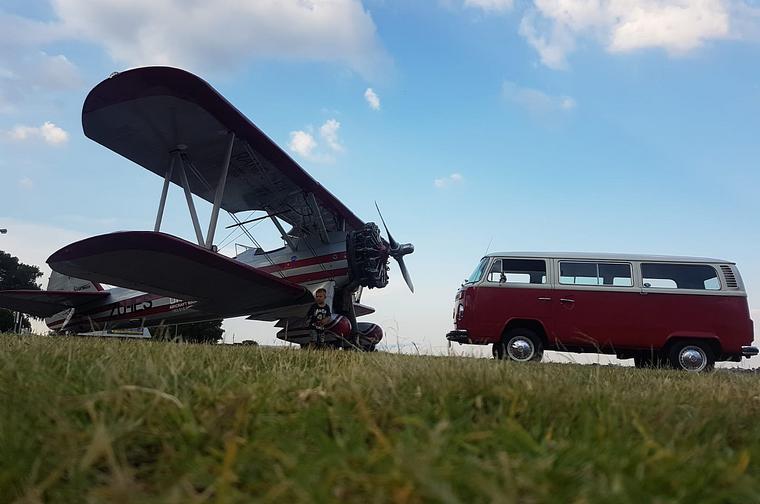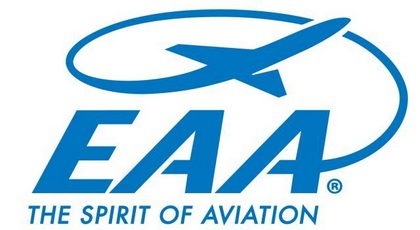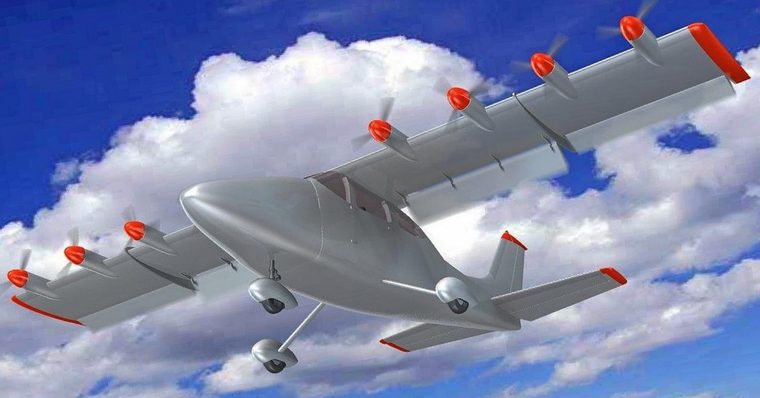








MIDWEEK UPDATE 11 FEBRUARY 2021    COVID 19 REGULATIONS, INITIATIVES AND AEROCLUB NEWS AERO CLUB MEMBERSHIP RENEWAL TIME Dear Aero Club Member, To renew your membership or join the Aero Club and its sections, go to www.aeroclub.co.za where you can use the Aeropay System, or you can pay via EFT. The Aero Club fee has seen a small nominal increase (from a previous reduction applied for 2020) and section fees have either remained the same or have also applied nominal increases. We continue to manage our budgeted finances to apply our resources to facilitate advocacy matters with the regulator with collaborative support from the sections. Please review and renew your membership as per the payment methods noted. If you have any difficulties, please contact the Aero Club office by email or phone as given below: - Sandra and Charne are ready to assist. Tel: 011 082 1100 Fax: 086 635 3755 E-mail: office@aeroclub.org.za www.aeroclub.co.za    R1,000.00 WORTH OF PRIZES - THE CHOCK NORRIS AVIATION THEMED PHOTO CONTEST Vote now for February week 2 finalists  Vote for FebW2.1  Vote for FebW2.2 How to Enter: Entering your aviation related photo is easy and simple. All images must be emailed to pilotspost@gmail.com with the following detail included: Your name, Email address, Telephone number, Where the photo was taken, Phone used, A theme name of the photo (Optional). Due to the large amount of entries we expect, Pilot's Post will not acknowledge your entry!! Entry Rules: 1. When entering the competition and by sending your photo to Pilot's Post, you explicitly grant the publication of your submitted photograph at Pilot's Post team's discretion without any remuneration or obligation to you. 2. Submitted photos must be resized to be less than 1 megabyte in size. If full-size photographs are required, the Pilot's Post team will request them from you. 3. Only photos taken with cell phones will be accepted. 3. All submissions must have an aviation theme. 4. Photo submissions may be cropped and / or resized only. Any other form of photo alteration or manipulation is not allowed and will be disqualified. 5. You may submit up to three entries per week. Judging: 1. The Pilot's Post team will select the 2 best photos submitted every week and add them into our "Midweek Update" published every Thursday morning, where our readers will then cast their votes by simply clicking the link below the photo of their choice. 2. At the end of each month, a complete article will be published on Pilot's Post to include the weekly photo submissions with the most reader votes. Our readers will then again have the opportunity to cast their votes by simply clicking the link below the photo of their choice. The photo with the highest number of votes will then be judged the Winner of the Month. 3. A prize of a set of Chock Norris personalised Aircraft Chocks with leather storage bag valued at R500 and a voucher from the Pilot Shop valued at R200.00 will be awarded to each monthly winner and a soft cover copy of the Aero Club of South Africa's Centenary Yearbook valued at R300.00 sponsored by Chapter 322 of the EAA of SA Eligibility: The Pilot's Post "Chock Norris 2020" aviation related photo competition is only open to photographers resident in South Africa as our prizes are not transferable and can only be redeemed in South Africa.  EAA CHAPTER 322 With our MACH program (Member Awards for Chapter Help), your membership could win you a trip to Oshkosh! Click on the link below today to renew or join! www.eaa.org.za/membership/membership-form or for EAA membership information go to www.eaa.org.za   The following events will to take place under the rules controlling the number of people congregating together and are therefore not open to the general public. 27 FEBRUARY EAA Chapter 322 drive-in or fly-in night at Jack Taylor Krugersdorp. We will show a movie on a giant screen on the airfield. Members can drive in or fly in (camp that night on the field). The planned movie is 'Flying the Feathered Edge' with Bob Hoover. Contact Neil Bowden E-mail: neil1@telkomsa.net Cell: 084 674 5674 27 FEBRUARY Rand Airport Rally Contact Frank Eckard E-mail: frank.eckard@mweb.co.za Cell: 083 269 1516 26 & 28 FEBRUARY Sandstone Steam Festival Contact 051 933 2235 Website: www.sandstone-estates.com .jpg) 3 MARCH EAA Chapter 322 monthly meeting virtual at Dicky Fritz MOTH hall Contact Neil Bowden E-mail: neil1@telkomsa.net Cell: 084 674 5674 6 MARCH SAPFA Morningstar ANR Morningstar Airfield Contact Tony Russell E-mail: tonyr@therussells.co.za Cell: 0832640107 6 MARCH Eagles Creek Breakfast Fly in 6 & 7 MARCH Sport Aerobatic Club Judges Trophy Venue TBA Contact Annie Boon E-mail: chunge@mweb.co.za 12 & 13 MARCH Bethlehem Aero Club event TBA Contact Stephan Fourie E-mail: fouriesj1491@gmail.com Cell: 072 344 9678 16 MARCH Aero Club of South Africa AGM venue TBA Contact Rob Jonkers E-mail: rob@aerosud.co.za Cell: 082 804 7032   During the coming months, we'll keep you informed with the latest information as the situation evolves in a dedicated area of our website with a highly visible logo. An important phrase to remember is "At this time…." As the return to events begins throughout the country, plans will change in conjunction with the current state of the pandemic. "We will be hosting AirVenture 2021, but there will be areas that will look different and areas where we'll incorporate technology to limit touchpoints as we work with local and state health officials to establish and maintain the best possible standards for public events," said Jack J. Pelton, EAA's CEO and Chairman. "Some areas may look different at Oshkosh this year, but the feeling will be the same as we gather to celebrate the world of flight." Some of the initial decisions made for this year's event, some of which will evolve and change as the event nears, include: Masks will be strongly recommended if you are unable to social distance (roughly 6 feet or 2 meters). Proof of COVID vaccine will not be required to attend. International visitation is dependent on current international travel regulations and mandates in the U.S. and individual countries of residence. Increased physical distancing will be encouraged in all areas. EAA is adding significant numbers of sanitizing facilities and working with industry-leading companies for continual disinfection throughout the grounds. Theater in the Woods, forums pavilions and other outdoor venues will operate with reduced seating capacity, with social distancing opportunities on the open grounds at that location. There will be fewer exhibitors in each indoor exhibit building, creating more walkways and separation between exhibitors. Additional venues on the grounds are being re-purposed to accommodate indoor exhibitors that are moved this year. Wherever possible, ventilation will be increased in tents and indoor facilities. Several annual events where physical distancing is not possible will not be held this year, including the Monday night concert; the Young Eagles, EAA Lifetime Member, and International Visitors dinners; the Runway 5K run/walk and large corporate events and receptions. High-demand forums and presentations will be scheduled more than once to accommodate demand while allowing for distancing. Free Admission for Ages 18 and Under at EAA AirVenture Oshkosh 2021. In addition, look for more details on new programs for low-contact procedures for admissions, camping registration, points of entry and other high-volume areas. "EAA is incorporating innovative ideas for our presentations and even the air shows to keep you safe in 2021 while keeping the fun factor high," Pelton said. "We appreciate your understanding that these plans will evolve in the coming months. We expect changes as we gear up for opening day, so our goal is to bring you any new information regularly as soon as we confirm it. We also understand that the ultimate decision to join us is always yours, based on your personal situation and comfort level." As always, we invite your ideas and input at feedback@eaa.org. We'll see you on the Oshkosh flightline this summer!  Terrafugia, Inc. announced that it has reached a significant milestone by obtaining an FAA Special Light-Sport Aircraft (LSA) airworthiness certificate for its Transition® roadable aircraft. The vehicle that received the certificate is legal for flight and represents the initial version of the Transition® roadable aircraft. Terrafugia will produce and sell additional initial (flight-only) versions to interested parties and will evolve the driving portion of the Transition® design, with the goal of being legal both in the sky and on local roads in 2022. "We are excited to have reached our goal of an airworthiness certificate for the initial version," said Kevin Colburn, Vice President and General Manager of Terrafugia. "During an extremely challenging pandemic year, our team remained focused, improved our quality system, completed the critical aspects of the design, built the vehicle, completed 80 days of flight testing, delivered 150 technical documents and successfully passed the FAA audit. This is a major accomplishment that builds momentum in executing our mission to deliver the world's first practical flying car."  GREEN AEROLEASE AND PIPISTREL AIRCRAFT ANNOUNCE A PARTNERSHIP TO ACCELERATE THE DEPLOYMENT OF ELECTRIC AVIATION IN FRANCE AND IN EUROPE Pipistrel Aircraft, founded in 1989, is among the world leaders in design and production of affordable environmentally friendly general aviation aircraft. Pioneer in terms of state-of-the-art technology for light aviation, Pipistrel is the first European aircraft manufacturer, and the only one so far, to obtain an aircraft certification from the European Union Aviation Safety Agency (EASA) for its electric aircraft, the Pipistrel Velis Electro, the ideal aircraft for initial training of pilots. With this Pipistrel proves that electric aircraft is not only possible, but also commercially useful. Velis Electro currently offers the maximum level of performance, which is achievable with current and modern technology. In the scope of this partnership, Green Aerolease and Pipistrel Aircraft reinforce their commitment in favour of a sustainable air transport sector and of the regional mobility, allowing the deployment of low noise and zero-emission electric aircraft to regional airports and urban areas, where the noise level does not allow piston engine aircraft. In partnership with the French Federation of Aeronautics, the initial 50 aircraft will be offered for rent to pilot schools and clubs to ensure the new generation of pilot training. Indeed, 84% of clubs think that electric aviation is a solution to environmental constraints and around 70% among them are willing to equip themselves with this new aircraft. In Europe there are more than 100 small GA airports which have severe flight restrictions, or the training there is not allowed because of noise. Velis Electro, with only 60 dB of noise, can bring back the flight to all of them. The expected deployment, first off in France, will be done as soon as mid-2021 and will spread progressively to several European countries. Green Aerolease is focused on accompanying and financing the decarbonization of the air transport and light aviation sectors by accelerating breakthrough innovations in the domain of mobilities. Within the next 3 years, 200 Pipistrel electric aircraft are to be deployed in France and in the coming few years to other countries through AAS (Aircraft as A Service). Finesse Max, Pipistrel distributor in France, will work in partnership with Green Aerolease to manage the support, after-sales service and maintenance network in order to keep the highest availability for the Velis fleet.   Final pre-season tests will be conducted behind closed doors in Australia before the start of an international racing calendar, where the initial MK3 races will provide crucial data on vehicle dynamics, performance, safety and powertrain technology that will aid in the development of the Airspeeder MK4, the manned version. The MK3 will be operated remotely from the ground for all flights. The MK3 is capable of reaching speeds in excess of 120 kph (75 mph) in flight and features LiDAR and Radar collision avoidance systems that create a 'virtual forcefield' around the craft. Safety features also include a carbon fibre frame and fuselage designed for manoeuvrability, performance and efficiency. According to Alauda, "The powertrain represents a significant upgrade on the Mk2 proof of concept vehicle, with power increased by 95% with only a 50% increase in weight." The MK3 possesses a 96 kW electric powertrain that gives the MK3 a thrust to weight ratio above two and the entire vehicle only weighs 100 kg (220 lb) unmanned. The MK3 is laid out in an 'octocopter X formation', which according to Alauda, will provide significant advantages to a pilot when the MK4 is released. When racing, a pilot in the MK series speeder will be able to make the same sharp "hairpin style" turns as a Formula 1 car on top of being able to move in the vertical direction. Furthermore, Alauda's engineers have developed a 'slide and lock' battery system facilitating rapid removal and insertion of batteries, allowing for rapid pit stops. Why it's important: As well as being the first vehicle of its kind, the MK3 speeder, the first aerial mobility vehicle designed for racing purposes, shows the overall growth of the aerial mobility industry. The industry continues to improve, not only in transportation but in the development of other related sectors as well.  The new aircraft will be used with the École du Personnel Navigant d'Essais et de Réception (EPNER), the French Air Force test pilot school and will be added to the current SOCATA TBM-700s in use with the unit. The TBM-940s will first be modified by DAHER Aerospace in order to integrate new test capabilities, as well as training as part of the training provided by EPNER. The wings of the TBM-940 will be modified to allow the carriage of a wide variety of payloads, up to 75 kg under each wing.  Boeing F-15 Chief Test Pilot Matt Giese checked out the multirole jet's avionics, advanced systems and software. A test team monitoring the data collected during the flight in real time confirmed that the aircraft performed as planned. "Today's successful flight proves the jet's safety and readiness to join our nation's fighter fleet," said Prat Kumar, Boeing vice president and F-15 program manager. "Our workforce is excited to build a modern fighter aircraft for the U.S. Air Force. Our customer can feel confident in its decision to invest in this platform that is capable of incorporating the latest advanced battle management systems, sensors and weapons due to the jet's digital airframe design and open mission systems architecture." The fighter's digital backbone means it can serve as a testbed for future technology insertion, a key capability for the Air Force. Modern variants of the F-15 also include fly-by-wire flight controls, an all-new digital cockpit, modern AESA radar and the ADCP-II, the world's fastest mission computer. The F-15EX, the most advanced version to date, features the Eagle Passive/Active Warning and Survivability System electronic warfare system to improve mission effectiveness and survivability for operators. In July, the Air Force awarded Boeing a contract to build the first lot of eight jets. Future plans call for as many as 144 aircraft.  In March 2018, Poland signed the contract for the additional four aircraft and support package, plus an option on four more aircraft. The original option of four M346s was delivered between October and November 2020. On 3 February 2021, Leonardo announced that the contract for the second option on four M346s was signed with the final delivery scheduled before the end of 2022. This will bring the total number to sixteen. The Polish Air Force M436s are operated by the 48. Eskadra Lotnicza (48.el)/4. Skrzydlo Lotnictwa Szkolnego (4.SLSz, 4th Flying Training Wing) at Dêblin air base.   "I am proud of our teams all over the world who adapted their ways of working to be there for our customers when they needed us the most, striving to help them to maintain their essential missions across the globe by delivering helicopters and the associated support and services they required. I would like to thank our customers for their continued trust in Airbus Helicopters," said Bruno Even, Airbus Helicopters CEO. "We certified the five-bladed H145 and the H160 and laid solid foundations for our pursuit of zero-emission technologies with our CityAirbus demonstrator," he added. Key deliveries in 2020 included the first five-bladed H145 to launch customer Norsk Luftambulanse, a helicopter emergency medical services operator, at the end of September, followed by deliveries to DRF Luftrettung at the end of the year. On the heavy side, the first H225Ms were handed over to the Kuwait Air Force as well as the first NH90s for the Spanish Air Force. September also saw the 463rd delivery, on time, on cost and on quality, of an UH-72A Lakota from the Airbus Helicopters factory in Columbus, Mississippi. Order highlights for 2020 consist of 84 helicopters for the best-selling H145, including 17 UH-72B for the US Army, the first Fenestron and Helionix-equipped versions to be ordered. The H135 achieved solid sales with 33 units and also received the EASA certification of an alternate gross weight as well as a new single pilot IFR cockpit layout at the end of 2020. Milestone Aviation and Heli-Union both became new customers for the multi-mission H160, ordered to address a wide range of missions including offshore transportation. The NH90 had a successful 2020 with the Bundeswehr placing an order for 31 naval helicopters to replace the ageing Sea Lynx fleet due to be retired. The French Armament General Directorate (DGA) confirmed the development of a new Standard 2 version to equip the French Special Forces and the first NH90 for Qatar performed its maiden flight at the end of the year. On the customer support and service side, once again there was a strong showing for HCare support contracts, with new customers joining the ranks such as the National Aeronautics and Space Administration (NASA) and Air Methods Corporation. Facing the global pandemic, the company mobilised to keep its military and civil customers flying thanks to elevated levels of technical and logistics support, new distance learning solutions, and direct assistance from Airbus Helicopters in making protective equipment available to pilots and crews. A new AirbusWorld collaborative customer platform was launched based on feedback from customers, offering a streamlined user experience and new functionalities aimed at fostering open dialogue among operators and with the company. Airbus Helicopters' resilient business model allows the company to continue investing and preparing the future. In 2020, innovation milestones included the first fully automatic flight of CityAirbus, a demonstrator that will play an important role in developing zero-emission flight and in preparing the future urban air mobility market. The VSR700, the company's rotary-wing unmanned aerial system, performed its first free flight in July and autonomous deck-landing trials at the end of the year.  WINGCOPTER RAISES $22M TO ADVANCE TECHNOLOGY LEADERSHIP IN DRONE DELIVERY Wingcopter, the German developer, manufacturer and operator of unmanned delivery drones for commercial and humanitarian applications, has secured $22 million in Series A funding. Wingcopter will use the funds to strengthen its leadership in drone-based logistics, with a special focus on healthcare-related applications, including the distribution of COVID-19 vaccines. At the same time, Wingcopter is well-positioned and ready to establish more partnerships worldwide centering around other fully automated delivery applications. The current model, the Wingcopter 178 Heavy Lift, provides both one- and two-way delivery, covering distances of up to 120 kilometers. It can accurately lower a package through a winch mechanism, or land at the point of destination and return to its origin with a new payload. To further expand its market reach, Wingcopter is pressing ahead at full speed to launch the next generation of its aircraft, a game-changing delivery drone with unmatched technical specifications. Pre-orders can already be placed. In addition to selling drones, Wingcopter will rapidly expand its drone-delivery-as-a-service offerings. These services give customers the opportunity to instantly benefit from Wingcopter's cutting-edge technology and its BVLOS (beyond visual line of sight) flight operations track record on five continents without having to own and maintain a fleet of drones, hire and train pilots, or run operations themselves.  AIRFLOW PLANS TO CONVERT A CESSNA 210 TO ESTOL USING DISTRIBUTED ELECTRIC PROPULSION  Following a year of sub-scale testing, aerial logistics startup Airflow plans to transform a single-engine Cessna 210 Centurion into an electric short take-off and landing (eSTOL) aircraft with a distributed electric propulsion (DEP) architecture. Airflow, founded by five former Airbus Vahana team members, intends to develop hybrid- and battery-electric eSTOL aircraft that are certifiable under existing Part 23 FAA regulations, targeting the middle-mile logistics market with an aircraft the team estimates will have 500 to 700 pounds (225 to 315 kilograms) of usable payload, travel four times faster than trucks and have a third of the hourly operating costs of comparable helicopters or eVTOLs. In December, Airflow selected VerdeGo Aero's diesel-battery powertrain for its hybrid-electric variant, which the team will develop first before moving to a fully electric version as the relevant enabling technologies progress. Airflow's Cessna 210 conversion will be done in parallel with its design of a new aircraft from the ground up to fully realize the benefits of DEP architecture, Kalogiannis told eVTOL.com in an email. "Because an aircraft of this type has never been flown before, we see the immense value in demonstrating this technology and capability at a relevant scale and in having a tool to further refine our understanding of eSTOL aerodynamics, operations, and flight control," Kalogiannis said. "We see the proof-of-concept demonstrator as an important tool that will provide us data which along with simulations, wind tunnel testing and other modelling and testing, will help us build and certify the best production product possible." Airflox CEO and co-founder Marc Ausman, speaking at the Vertical Flight Society's Electric VTOL Symposium on Jan. 28, added that the converted Cessna 210 is intended primarily to study the take-off and landing phases of flight. "It will certainly have much better STOL performance than a standard Cessna 210, but it's not designed for cruise performance or anything like that. It's meant purely to explore the approach and departure parts of what we're doing," Ausman said. "The proof-of-concept is mostly focused on the control system, control technology and the software, understanding how we can maximize the use of distributed electric propulsion. It's less about the aerodynamics or meeting the requirements of the production aircraft."  HAL'S LUH RECEIVES INITIAL OPERATIONAL CLEARANCE HAL's Light Utility Helicopter (LUH) received the Initial Operational Clearance (IOC) for the Indian Army from CEMILAC at the Aero India 2021 in the presence of Defence Minister, Mr. Rajnath Singh. The LUH is a 3-ton class new generation single-engine helicopter indigenously designed and developed by the Rotary Wing Research and Design Centre of HAL, with features suitable for operations in the diverse operating conditions unique to India. The LUH will replace the aging fleet of Cheetah/Chetak helicopters operated by the services. The LUH is powered by a single turboshaft engine Ardiden 1U from Safran Helicopter Engines (SHE) in France, with adequate power margins to accomplish high-altitude missions in Himalayas with ease. LUH is equipped with a smart cockpit display system (glass cockpit), state-of-the-art HUMS (health and usage monitoring system) and is designed for various utility and armed roles. All certification activities like ground testing, ground test vehicle endurance runs, system testing, flight testing - including hot weather trials, cold weather trials, sea level trials and hot weather high altitude trials - have been completed. Based on the flight trials carried out, all PJSQR requirements for basic helicopter certification have been complied satisfactorily.  KOPTER SH09 FLIES AFTER MAJOR RETROFIT The SH09 third prototype (P3) recently took off, at Mollis, Switzerland, following a major modification. This was part of the planned product development roadmap, towards the final Type Certificate configuration, as presented by Kopter during the 2020 HAI exhibition. The expected improvement of P3 handling qualities and stability were immediately apparent to the crew. During the first flight, it was possible to complete a set of low-speed envelope manoeuvres up to 35 kts, including forward, rearward and sideward flights as well as spot turns. Subsequently, several flights have taken place and the crew has been able to expand the flight envelope to climb, descents, autorotation and turns up to 5000 ft. Richard Grant, Kopter chief test pilot commented, "The overall helicopter response to control inputs has been improved. All manoeuvres could be performed accurately with deliberate and precise inputs." The Garmin G3000H has performed as expected, thus confirming the importance of anticipating its integration in the P3 configuration to fully develop its potential and benefits in the next generation SH09 helicopter. Michele Riccobono, Kopter CTO and head of flight operations stated, "The results of these first flights with this new configuration are the evidence of the Kopter engineering capability to accurately predict the helicopter behaviour and successfully drive the design towards the required performance improvements". The flight test program is now continuing with the expansion of the weight, speed and altitude envelopes while assessing the new flight deck avionics suite.  BELL DELIVERS THE FIRST BELL 505 NXI TO EUROPE Bell Textron Inc., a Textron Inc. company, recently delivered the first European Union Aviation Safety Agency (EASA)-certified Bell 505 NXi to a corporate customer in Europe. The delivery was made at the Bell Textron Prague facility. With the latest Garmin avionics and dual channel FADEC-controlled engine, the Bell 505 NXi is the most advanced short light single aircraft on the market. With the latest Garmin avionics and dual channel FADEC-controlled engine, the Bell 505 NXi is the most advanced short light single aircraft on the market. Some of the aircraft offerings include: Dual core processors reduce boot time by more than 50%, LED backlit and improved displays that increase resolution and brightness. Easy LRU replacement via automatically loaded software recognition. VFR/IFR charts available via the multifunction display (MFD). Enhanced Horizontal Situation Indicator (HIS) with map, traffic and terrain overlays. Optional wireless datalink allows for easy flight plan and database uploads via a compatible mobile device. There are nearly 300 Bell 505s operating in more than 55 countries across six continents, surpassing 50,000 total fleet flight hours. The aircraft is designed to deliver an easy, efficient flight experience while offering significant value to parapublic, helicopter emergency medical services and private operators.  WORLDWIDE INCIDENTS AND ACCIDENTS BELIZE  On 17 November 2017 a Tropic Air Cessna C208B Grand Caravan with 11 passengers and one crew ditched in the Caribbean Sea after part of the landing gear made contact with the upper portion of the front passenger door frame of a sport utility vehicle that was driving along the main road. The accident occurred during the transition from take-off roll/rotation to initial climb out while the aircraft had just been airborne at 5.4 feet AGL and at a distance of 28 feet past the end of runway 07 of the Placencia airport. The impact caused the aircraft to deviate from its normal climb profile. All 11 passengers successfully exited the aircraft with only minor injuries and were taken for medical attention. The Belize Civil Aviation Board found that the driver of the vehicle failed to adhere to traffic warning signs regarding low flying aircraft and drove his vehicle directly into the departure path of an aircraft. That the pilot flew the aircraft at a dangerously low altitude over the road and did not properly assess the risk at hand which was a vehicle advancing into the aircraft's departure path which could cause a collision and that the pilot did not take collision avoidance (evasive) measures in a timely manner. South Africa, Ermelo Airfield (FAEO), Mpumalanga: The pilot of a PZL-Mielec M-18A Dromader operated by FFA Assets Pty Ltd lost directional control and crashed during a take-off attempt from Ermelo Airfield (FAEO), Mpumalanga. The pilot escaped unhurt and the aircraft received substantial damage. Somalia, Balidogle, Lower Shabelle region: An unknown helicopter make of the type Uganda People's Defence Forces operating on behalf of Amisom with four on board crashed upon take-off in Balidogle, Lower Shabelle region, Somalia during an Amisom military operation. Four Ugandan soldiers were injured as a result of the crash. The crash was apparently a result of a technical malfunction of the helicopter.  Japan, Tokyo-Narita Airport: A Boeing 747-8F of Nippon Cargo Airlines, operating from Hong Kong to Tokyo/Narita, suffered a tail strike while performing a go around in the first landing attempt. The freighter landed safely in the second attempt 20 minutes later. In the post flight inspection, a scar with three meters long and 90 cm wide was found in the lower rear fuselage. The runway was temporally closed for inspection, but found nothing abnormal. There were no injuries experienced by the two crew members. Wind shear may be a factor. Initially, JTSB launched an investigation as a serious incident, however, the rating of the occurrence was changed to an aviation accident next day. Poland, Gdansk-Lech Walesa Airport: A Wizz Air Airbus A320neo collided with an airport truck at Gdansk Airport, Poland, after being pushed back from the gate. The cabin of the truck impacted the nose radome of the Airbus. USA, South of Flabob Airport, Riverside, CA: Following a loss of engine power, a Cessna 150F with only the pilot on board force landed to roadway terrain in Riverside County south of Flabob Airport Riverside/Rubidoux, California. The airplane sustained substantial damage upon impact with several unoccupied motor vehicles and the sole pilot onboard was not injured.  USA, Chicago-Executive Airport, IL: A Dassault Falcon 900EX operated by International Aviation LLC with two occupants made an overrun at Chicago-Executive Airport Illinois and came to rest in the EMAS (Engineered Material Arresting System). No injuries reported and the aircraft was not damaged. USA, South of Lucky Peak near Boise, ID: Three Idaho Army National Guard personnel were killed after their UH-60 Black Hawk helicopter crashed south of Lucky Peak near Boise, Idaho. Poor weather reportedly delayed launch of a SAR aircraft. USA, Leicester, NW of Worcester Airport, MA: A Piper PA-46-350P Malibu Mirage operated by Forza Management Co with three occupants and a dog on board sustained substantial damage upon impact with the terrain northwest of Leicester, about 3 miles NW of Worcester Airport (ORH/KORH), Massachusetts. The three occupants onboard the airplane received unspecified injuries and the dog was unharmed.  THIS WEEK IN HISTORY 9 FEBRUARY 1939  Alex Henshaw sets a new speed record for the round trip between England and Cape Town in 4 days 10 min in a Percival Mew. Photo © Imperial War Museums / commons.wikimedia.org Henshaw received his private pilot's licence (no. 4572) on 6 June 1932. He made a name for himself in the 1930s in air racing. Aged only 20, he competed in King's Cup Air Race in 1933 flying a Comper Swift, winning the Siddeley Trophy. He also flew a Leopard Moth and an Arrow Active which caught fire while he was performing aerobatics: Henshaw bailed out safely. On 6 September 1935, Henshaw's aircraft came down in the Irish Sea while he was competing in the King's Cup; he was rescued by the Isle of Man Steam Packet Company steamer, Ramsey Town. On Sunday 5 February 1939, he set out to fly his Mew Gull to Cape Town and back. He refuelled on the way out in Oran in Algeria, crossed the Sahara to land in the Belgian Congo and then Angola, landing at Wingfield Aerodrome Cape Town after flying 6,377 miles in 40 hours. He spent 28 hours in Cape Town and retraced his route back to the UK, landing on 9 February after a flight of 39 hours, 36 minutes. He experienced hazardous landings at remote bush airstrips, battling through a tropical storm and overcoming extreme exhaustion on the return leg. He completed the whole 12,754-mile round trip in 4 days, 10 hours and 16 minutes, breaking the record for each leg and setting a solo record for the round trip. By the end, he was so tired that he had to be lifted out of the cockpit Henshaw passed away on 24 February 2007.  www.youtube.com/channel/UCCuRVZAGodT6sztTeXBGeMw and subscribe to our YouTube channel  |
                                      |
 |
 |

Copyright © Pilot's Post PTY Ltd
The information, views and opinions by the authors contributing to Pilot's Post are not necessarily those of the editor or other writers at Pilot's Post.